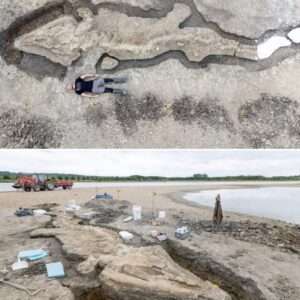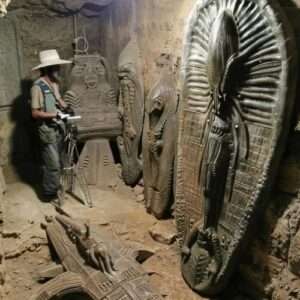The American chestnut tree (Castanea dentata) once reigned supreme in the forests of the Appalachian Mountains, where it made up roughly 25% of the hardwood canopy. Towering over 100 feet tall and capable of living for hundreds of years, the tree was integral to both the environment and human life in the region. Its nuts provided sustenance for wildlife, such as deer, bears, and squirrels, as well as for people. Additionally, the American chestnut’s strong, rot-resistant wood was highly valued for building homes, barns, and fences, and was widely used in furniture making.

For centuries, the American chestnut was a key part of the Appalachian ecosystem, contributing not just to the forest’s structure but also to its biodiversity. These trees played a crucial role in stabilizing soil, providing food, and supporting a range of species in the region. Their economic and cultural significance cannot be overstated—they were part of the backbone of rural communities.
The Blight That Nearly Wiped Out the American Chestnut
The American chestnut’s downfall began in the early 20th century, when a deadly blight caused by the fungus Cryphonectria parasitica was accidentally introduced to North America, most likely via imported chestnut trees from Asia. The fungus spread quickly, and within just a few decades, it decimated the species. By the 1950s, an estimated 4 billion American chestnut trees had been lost to the blight, transforming the landscape of the Appalachian forests and leaving behind only a few isolated trees that survive to this day.
The blight doesn’t kill the roots of the chestnut trees, so new shoots often sprout from the base of infected trees. However, these saplings rarely live long enough to mature and produce seeds before succumbing to the fungus, preventing the species from repopulating naturally.
Restoration Efforts: Breeding Blight-Resistant Chestnut Trees
In recent years, scientists and conservationists have embarked on a mission to restore the American chestnut to its former glory. Several initiatives have focused on breeding programs aimed at developing trees that are resistant to the blight. These efforts include cross-breeding American chestnuts with blight-resistant Chinese chestnut trees to create hybrids, as well as employing genetic engineering techniques to insert blight-resistant genes into American chestnuts.
The goal of these programs is to reintroduce the American chestnut into its historical range, allowing it to reclaim its place as a dominant tree in the forests of the eastern United States. Scientists are hopeful that these new trees will not only resist the blight but also preserve the important ecological and cultural roles that the American chestnut once played.
The Long Road Ahead: Challenges and Hope for the Future
Restoring the American chestnut will not be easy. Even with the development of blight-resistant trees, there are numerous hurdles to overcome, including ensuring that the new trees are capable of thriving in the wild, integrating them into the existing ecosystem, and managing potential genetic diversity issues. However, the dedication of researchers, conservationists, and community groups remains strong, and there is a growing optimism that the American chestnut can one day be restored to its natural habitat.

For many, the restoration of the American chestnut represents more than just the revival of a tree species—it symbolizes a broader effort to repair ecosystems that have been disrupted by human activity and invasive species. If successful, this project could serve as a model for future conservation efforts aimed at restoring other species and ecosystems affected by similar challenges.
Conclusion: Reviving an Icon of the Appalachian Forests
The American chestnut tree’s decline was one of the most dramatic environmental changes in the history of North American forests. However, ongoing restoration efforts offer hope that this once-majestic tree can be brought back to its former prominence. The revival of the American chestnut is not just a matter of ecological importance; it is a tribute to the resilience of nature and the determination of the people working to restore it.
As these efforts continue, the American chestnut may once again become a cornerstone of the Appalachian forests, providing the same benefits to future generations as it did for centuries past.





